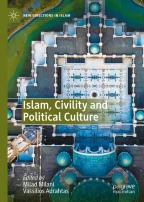
Though commonplace to speak about Islams in view of benign multiple identities, there remains a deep-seated conflict running throughout Islamic history, represented by Sunni and the Shi‘a divergence. Division seems to be one of the most potent forces in the shaping of the Islamic world—especially in terms of its political culture(s). The present study aspires to demonstrate that this division is both inherent and foundational to the experience of Islam. By a combined analysis of historical data and phenomenological types we delve into the cardinal religio-political issues of authority and interpretation, as well as their ramifications, in order to bring forth the distinctiveness of Islamic historicity. At the same time, a reassessment of certain aspects of conflict theories of religion is proposed.
We are grateful to our colleague Dr Aydogan Kars from the Centre for Religious Studies, Monash University, for reading this study and offering his most constructive comments.
This is a preview of subscription content, log in via an institution to check access.
eBook EUR 93.08 Price includes VAT (France)
Softcover Book EUR 116.04 Price includes VAT (France)
Hardcover Book EUR 116.04 Price includes VAT (France)
Tax calculation will be finalised at checkout
Purchases are for personal use only

Throughout the present chapter, the term “conflict” refers not only to observable instances of social violence, but more so to deep-seated differentials that bring about a variety of dialectical oppositions, of which social violence is just one example. Consequently, by no means do we intent to present religion solely as a source of what is usually perceived as sociopolitical conflict; more to the point, what we aim at emphasizing is that, even when religion ends or overcomes a certain level of conflict, this is achieved on the basis of some other, more profound, level of conflict.
Although the sectarian opposition is a comprehensive one in its own right, since it encompasses (deviation) both (in) beliefs and (in) practices, it does so at a sociopolitical level that mobilizes only part of the conflict spectrum involved and not the whole spectrum. In other words, the sectarian disagreement/opposition as to who embodies authority is one thing, while the fundamental existential differentiation that determines it is quite another.
For an overview regarding the last comment, consult Black (2011). At this point we do not imply that Islam was not already meaningful with its first converts, but what we want to indicate is that, pecisely because—as later tradition would have it—the beginnings of Islam were the most meaningful moment, the subsequent Islamic pursuit of meaning could only have taken place by envisaging that moment as a point of reference.
For details on these groups/tendencies/movements, see Brown 1996; also Melchert 1997. For details on the development of taqiyya, see Clarke 2005.For a discussion of the concept of normative power in comparison to other forms of power, see Diez 2013.
For the developments that created the backdrop of this agenda, see Hallaq 2005.For some pertinent remarks concerning Kharijite pietism, which formed the basis for their accentuated individualism, see Donner (2010, pp. 162–167).
We speak about priority and opposition, for on the one hand structure is anything but absent in the Shi‘a experience and the same is true for agency with regard to the Sunni experience, while on the other hand the complementary coexistence of structure and agency in both of them has to be distinguished from the oppositional function of those two aspects when seen in a comparative perspective. Furthermore, the dialectics of structure and agency in Islam are not limited to the Sunni-Shi‘a divide, but are played out in other internal differentiations of Islam as well, such as the legalistic/mainstream vesus the mystical/Sufi. For a further theoretical and methodological exploration of this dialectics, with a focus on Sufism, see Milani and Adrahtas 2018.
It is perhaps in such a phenomenological perspective that one can better account for the fact that historically Islamic eschatology—and other cognate phenomena, such as messianism and millenarianism—has persisted in a more vivid and explosive manner within the Shi‘a experience. For a comprehensive overview of Islamic eschatology, see Günther and Lawson 2017; for Shi‘a eschatology, see, for example, Badakhchani 2010.
In our understanding, this is how one could put the theological doctrine of Divine Unity (tawhid ) into socio-political terms.
For such theories, see Schlee (2008); Eynikel and Ziaka (2011); Kurtz (2012, pp. 279–318).A shift from materialist to hierophanic dialectics should not be seen as an opposition to materialism, but rather as a more nuanced understanding of materialism—an understanding that appreciates the multilayered-ness of materiality and focuses on the experience of the latter’s being as something beyond its mere essence. In this respect hierophanic dialectics is about a consciousness-imbued materiality. When materiality is approached in this way, then the conflict perceived within it takes on broader and deeper aspects than just observable instances of violence.
By bringing to the fore of the study of conflict religious ruptures/tensions/discrepancies, one basically aims at bringing within the orbit of scholarly attention the indeterminacy that breaks in the regularity of societal structures/functions/interactions and renders them capable of lending themselves to change, alteration and transcendence.
Of course by this remark we do not want to disregard the existence and importance of whatever attempts have been historically to reconcile the Sunni and the Shi‘a hierophanic perspectives at the level of theology and/or spirituality.